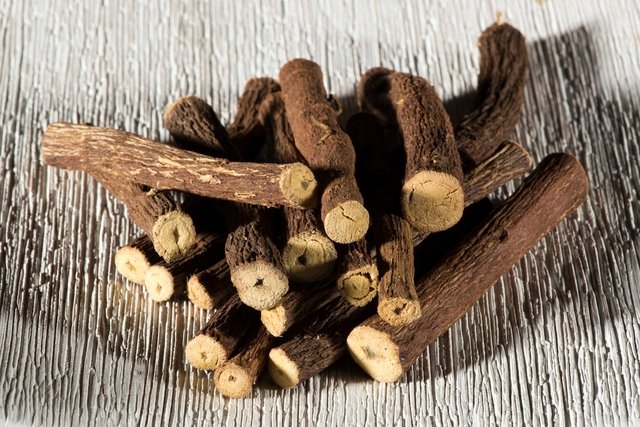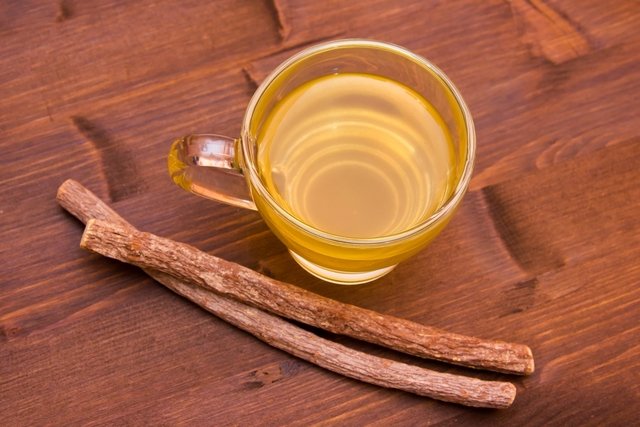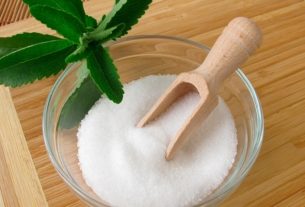Licorice is a medicinal plant, also known as glycyrrhiza, regaliz or sweet root, which is known as one of the oldest medicinal plants in the world, having been used since ancient times to treat various health problems, especially stomach problems, inflammation and respiratory diseases.
Although it has several health benefits, the use of licorice can also cause several side effects on the body, especially when the plant is consumed excessively. This happens because licorice is rich in glycyrrhizic acid, a substance that prevents the conversion of cortisol into cortisone, which causes the kidneys to stop working properly and end up eliminating excess potassium, resulting in several serious problems, including heartbeat changes. cardiac.
The scientific name for licorice is Glycyrrhiza glabra and can be purchased in natural product stores, compounding pharmacies and some open-air markets. However, its use should always be carried out under the guidance of a doctor, herbalist or other healthcare professional accustomed to the use of medicinal plants.

What is it for
Licorice can serve several functions in the body, the main ones being:
1. Eliminates fungi and bacteria
Licorice contains substances that appear to be capable of eliminating different types of bacteria, such as Salmonella, E. coli, Pseudomonas aeruginosa, Staphylococcus aureus e Streptococcus pyogenesboth when used in the form of an aqueous extract and an alcoholic extract.
Furthermore, the use of licorice has shown good action against fungi, and is even effective in eliminating drug-resistant Candida albicans infections. According to a study carried out on HIV patients, licorice tea appears to be an excellent option for treating fungal infections in the mouth.
2. Has antioxidant action
Several investigations carried out in the laboratory demonstrate the antioxidant effect of licorice, which seems to be justified by the presence of substances such as glabridin, apigenin and liquiritin.
3. Regulates blood sugar
Studies carried out on rats have shown that the use of licorice appears to be able to regulate blood glucose levels in diabetics. Additionally, several reports indicate that the use of licorice appears to reduce common symptoms of diabetes, such as excessive thirst and frequent urge to urinate.
4. Fight malaria
Licorice contains a substance known as licochalcone A, which appears to have a high anti-malaria effect, being able to eliminate the malaria parasite without causing any side effects. For this reason, in China there are 3 different species of licorice that are included in the pharmacopoeia as a form of complementary treatment for malaria.
5. Stimulates the immune system
Laboratory investigations have shown that licorice is capable of increasing the production of some types of lymphocytes and macrophages, important cells of the immune system. Furthermore, licorice also appears to have some antiviral action, protecting the body against viral infections, especially of the Influenza type.
6. Has anti-inflammatory action
In some studies, licorice has demonstrated strong anti-inflammatory action, showing greater efficacy than hydrocortisone, a type of corticosteroid widely used in the treatment of inflammation, such as arthritis and skin problems.
Unlike over-the-counter anti-inflammatory medications, the use of licorice does not appear to affect the stomach lining.
7. Protects the stomach and liver
Carbenoxolone is a synthetic substance widely used to treat gastric ulcers and was originally created with a structure similar to a substance found in licorice root that helps protect the stomach.
In addition, glycyrrhizic acid has also demonstrated hepatoprotective action, reducing inflammation of liver cells and may help prevent the emergence of cancer in this organ.
8. Stimulates the elimination of phlegm
Although the mechanism of action is not known, there are several studies that demonstrate that the use of licorice helps to reduce irritation in the throat region, in addition to helping to eliminate phlegm.
For this reason, this plant has been widely used since ancient times to treat respiratory problems, especially when there is a cough with phlegm, as happens in bronchitis, for example.

How to use licorice
The normally used part of licorice is its root, from which its active substances are extracted. One of the most popular forms of use is tea, which can be made as follows:
1. Licorice tea
Ingredients
- 5 grams of licorice root;
- 500 mL of water.
Preparation mode
Place 5 grams of licorice root in 500 mL of water and boil for 10 to 15 minutes. Then let it cool, strain and drink up to 2 cups a day.
2. Licorice capsules
The best way to use licorice for medicinal purposes is to use it in capsule form, under the guidance of a herbalist, who should indicate the best daily dosage, according to the problem to be treated. In general, the dose used is 150 to 300 mg.
Because licorice has some side effects, it is generally recommended not to exceed a daily dose of 500 mg glycyrrhinic acid.
Possible side effects
Licorice is considered a safe plant for consumption, however, if consumed in excess it can cause some side effects due to the presence of glycyrrhinic acid, which increases the concentration of cortisol in the body, resulting in a decrease in potassium levels in the blood, which in turn, they cause an increase in blood pressure, muscle weakness and changes in heart rate.
Licorice could also decrease the concentration of testosterone in the body from 500 mg.
Although it is rare, licorice poisoning is possible, especially when the plant is consumed in high doses and for a long time. This poisoning can result in kidney failure, heart problems and fluid accumulation in the lungs.
There are already some licorice supplements on the market that are free of glycyrrhinic acid, but this is also one of the most important substances in licorice, responsible for several of its therapeutic effects.
Who Should Avoid Licorice
Since it has several side effects, licorice should always be used under the guidance of a doctor, herbalist or other healthcare professional accustomed to the use of medicinal plants.
Its use is completely contraindicated in people with high blood pressure, heart problems, kidney disease and low blood potassium levels. Furthermore, licorice should also be avoided during pregnancy and breastfeeding.
Finally, licorice can also interact with some medications, especially medicines for high blood pressure, anticoagulants, diuretics, contraceptives and anti-inflammatories.

Sign up for our newsletter and stay up to date with exclusive news
that can transform your routine!
Warning: Undefined array key "title" in /home/storelat/public_html/wp-content/plugins/link-whisper-premium/templates/frontend/related-posts.php on line 12
Warning: Undefined array key "title_tag" in /home/storelat/public_html/wp-content/plugins/link-whisper-premium/templates/frontend/related-posts.php on line 13



